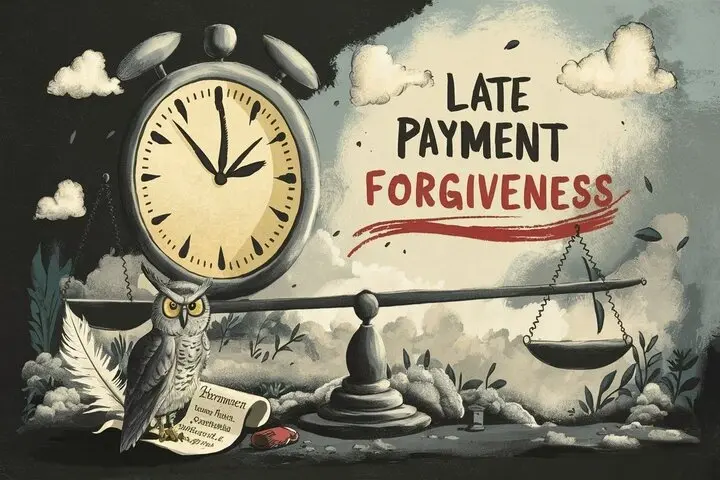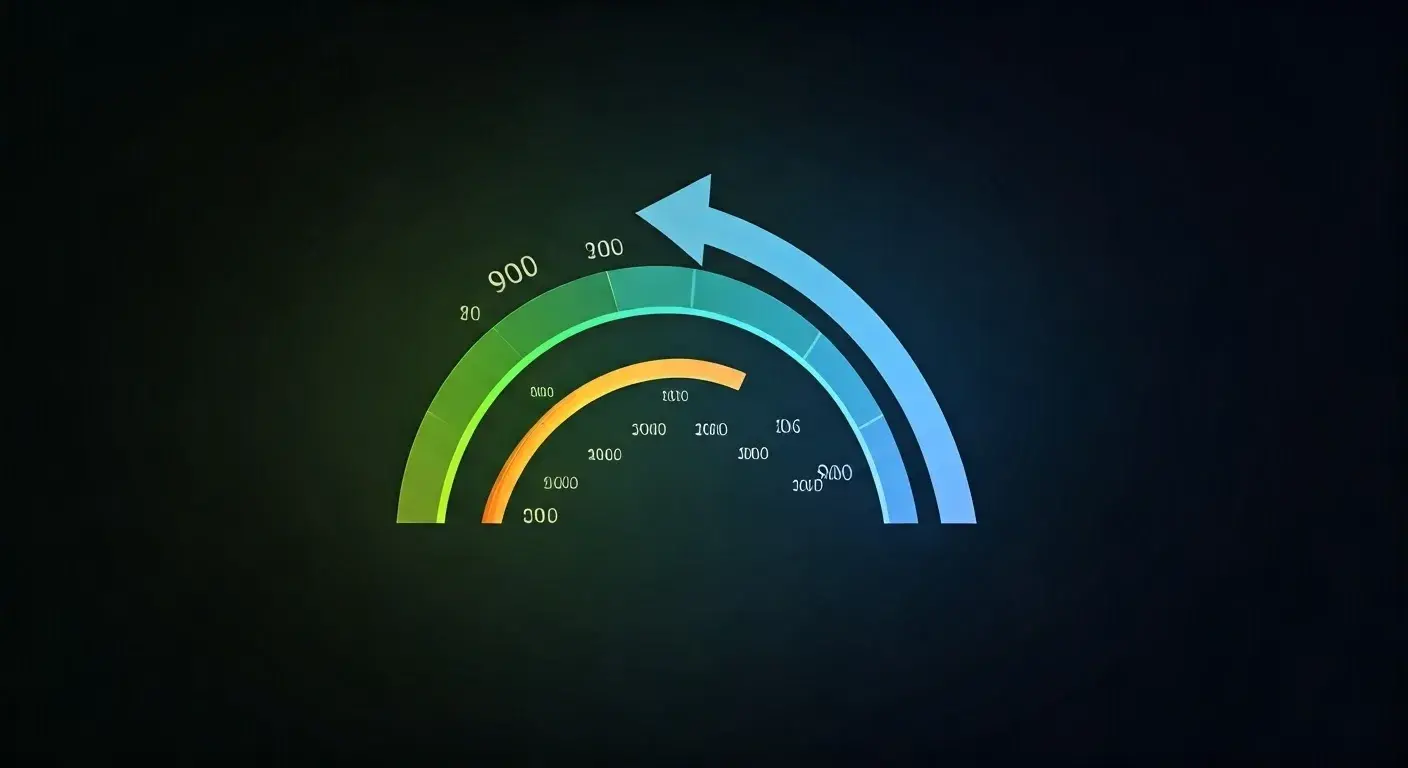-
Posted on: 23 Jul 2024

-
Dealing with financial obligations can sometimes be challenging, and occasionally, payments are made late. When this happens, the impact on your credit score can be significant. Fortunately, there's a possibility known as "late payment forgiveness." This guide explores what late payment forgiveness is, how it works, and what you need to know about it.
Understanding Late Payment Forgiveness
Late payment forgiveness refers to the possibility of having a reported late payment removed from your credit report. While not a guaranteed solution, it's a valuable option to explore, particularly if you have an otherwise strong credit history. A single late payment, especially if it's reported to the credit bureaus, can negatively affect your credit score, making it harder to secure loans, rent an apartment, or even get approved for certain jobs.
Why Late Payments Hurt Your Credit
Your payment history is one of the most important factors that credit bureaus consider when calculating your credit score. Late payments, especially those more than 30 days past due, are reported and can significantly lower your score. The longer the payment is overdue, the more damaging it becomes.
Here’s how late payments can affect your credit:
- Reduced Credit Score: Even a single late payment can cause a noticeable drop in your credit score.
- Difficulty Securing Loans: Lenders may be hesitant to approve you for loans or credit cards if you have a history of late payments.
- Higher Interest Rates: If you are approved for a loan, you may be offered higher interest rates due to the increased risk perceived by lenders.
- Denial of Services: Landlords, utility companies, and even employers might check your credit report, and a negative payment history could lead to denial of services or job opportunities.
How Late Payment Forgiveness Works
Late payment forgiveness isn't an automatic process. It typically involves contacting the creditor and requesting that they remove the negative mark from your credit report. Several strategies can be used, and the success often depends on your relationship with the creditor, your overall payment history, and the reason for the late payment.
Strategies for Requesting Late Payment Forgiveness
- Good Faith Payment: If you have a generally good payment history, start by contacting the creditor and explaining the situation. Express your commitment to responsible financial management and request that they consider removing the late payment as a one-time courtesy. This strategy is often called a "goodwill letter."
- Negotiation: Sometimes, creditors are willing to negotiate. You might offer to enroll in automatic payments or agree to a payment plan in exchange for the removal of the late payment.
- Hardship Programs: If the late payment was due to a genuine financial hardship, such as job loss, medical expenses, or a natural disaster, explain your situation to the creditor. Many creditors have hardship programs that can offer temporary relief, including waiving late fees and potentially removing the negative mark on your credit report.
- Dispute the Payment: If you believe the late payment was reported in error, you have the right to dispute it with the credit bureaus. The credit bureau will then investigate the issue with the creditor. If the creditor cannot verify the accuracy of the late payment, it must be removed from your credit report. This is more appropriate when the late payment *was not actually late* according to the terms of your agreement.
Crafting a Goodwill Letter
A goodwill letter is a formal request to a creditor to remove a late payment from your credit report. It's essential to approach this letter with the right tone and content. Here's a breakdown of how to write an effective goodwill letter:
- Be Polite and Respectful: Begin with a courteous greeting and express your appreciation for the creditor's services.
- Explain the Circumstances: Clearly and concisely explain why the payment was late. Be honest and transparent about the situation, but avoid making excuses.
- Acknowledge Responsibility: Take responsibility for the late payment, even if it was due to unforeseen circumstances. This shows the creditor that you understand the importance of timely payments.
- Highlight Your Good Payment History: Emphasize your history of making on-time payments and your commitment to responsible financial management. Provide examples of your positive payment behavior.
- Request Forgiveness: Politely request that the creditor consider removing the late payment as a one-time courtesy. Explain how the late payment is affecting your credit score and your ability to achieve your financial goals.
- Express Gratitude: Thank the creditor for their time and consideration. Reiterate your commitment to maintaining a good relationship with them.
Example Goodwill Letter Template:
[Your Name] [Your Address] [Your Phone Number] [Your Email Address] [Date] [Creditor Name] [Creditor Address] Subject: Request for Goodwill Adjustment - Account [Account Number] Dear [Creditor Name/Customer Service Department], I am writing to respectfully request a goodwill adjustment regarding a late payment reported on my account, [Account Number]. I understand the importance of making timely payments and I take full responsibility for the late payment that occurred on [Date]. The late payment was due to [Brief explanation of the circumstances]. I understand this is my responsibility, and I deeply regret any inconvenience this may have caused. I have been a customer of [Creditor Name] for [Number] years and have generally maintained a positive payment history. Prior to this incident, I have consistently made on-time payments and have always strived to meet my financial obligations. My payment history demonstrates my commitment to responsible financial management. I am aware that this late payment has had a negative impact on my credit score, which is affecting my ability to [Explain how the late payment is affecting you, e.g., secure a loan, rent an apartment]. I would be immensely grateful if you would consider making a goodwill adjustment and removing the late payment from my credit report. Thank you for your time and consideration. I appreciate your understanding and look forward to your positive response. I am committed to continuing to maintain a positive relationship with [Creditor Name]. Sincerely, [Your Name]
Negotiating with Creditors
Negotiation is another powerful tool in seeking late payment forgiveness. It involves communicating with the creditor and exploring potential compromises that benefit both parties.
- Offer to Enroll in Automatic Payments: Agreeing to enroll in automatic payments demonstrates your commitment to making future payments on time and can incentivize the creditor to remove the late payment.
- Set Up a Payment Plan: If you're struggling to catch up on your payments, propose a payment plan that allows you to gradually repay the outstanding balance. This shows the creditor that you're serious about resolving the issue and can lead to a more favorable outcome.
- Offer a Lump-Sum Payment: If you have the funds available, offer to make a lump-sum payment to bring your account current. This can be a strong bargaining chip, as it provides immediate financial relief for the creditor.
Leveraging Hardship Programs
Many creditors offer hardship programs to assist customers who are facing financial difficulties. These programs can provide various forms of relief, including:
- Temporary Suspension of Payments: Some creditors may allow you to temporarily suspend your payments while you're facing financial hardship.
- Reduced Interest Rates: Creditors may offer reduced interest rates to make your payments more manageable.
- Waiving Late Fees: Hardship programs often include waiving late fees to help you catch up on your payments.
- Debt Management Plans: Some creditors may work with you to create a debt management plan that combines your debts into a single, more manageable payment.
When applying for a hardship program, be prepared to provide documentation that supports your claim, such as proof of job loss, medical bills, or other evidence of financial hardship.
Disputing Inaccurate Information
Under the Fair Credit Reporting Act (FCRA), you have the right to dispute inaccurate information on your credit report. If you believe a late payment was reported in error, you can file a dispute with the credit bureaus.
- Gather Evidence: Collect any documentation that supports your claim, such as payment receipts, bank statements, or communication with the creditor.
- File a Dispute: Contact the credit bureaus (Equifax, Experian, and TransUnion) and file a dispute online, by mail, or by phone.
- Wait for Investigation: The credit bureau will investigate the dispute with the creditor. The creditor has 30 days to respond.
- Review the Results: If the creditor cannot verify the accuracy of the late payment, it must be removed from your credit report.
Who Qualifies for Late Payment Forgiveness?
While there are no strict eligibility requirements for late payment forgiveness, certain factors can increase your chances of success:
- Strong Payment History: A history of making on-time payments demonstrates your reliability as a borrower.
- Isolated Incident: If the late payment was a one-time occurrence, creditors may be more willing to grant forgiveness.
- Genuine Hardship: A legitimate reason for the late payment, such as job loss or medical emergency, can strengthen your case.
- Good Relationship with the Creditor: Having a long-standing and positive relationship with the creditor can increase your chances of success.
The Impact of Late Payment Forgiveness on Your Credit Score
If you are successful in getting a late payment removed from your credit report, you should see a positive impact on your credit score. The extent of the improvement will depend on several factors, including your overall credit profile and the severity of the late payment.
Monitoring Your Credit Report
It's essential to monitor your credit report regularly to ensure the accuracy of the information reported. You can obtain a free copy of your credit report from each of the three major credit bureaus (Equifax, Experian, and TransUnion) once a year through AnnualCreditReport.com.
Review your credit report carefully and dispute any inaccuracies you find. This can help protect your credit score and ensure that you're not being penalized for errors.
Preventing Late Payments in the Future
The best way to avoid the negative impact of late payments is to prevent them from happening in the first place. Here are some strategies to help you stay on track:
- Set Up Automatic Payments: Enroll in automatic payments to ensure that your bills are paid on time, every time.
- Use Calendar Reminders: Set up calendar reminders to remind you of upcoming payment deadlines.
- Budget Effectively: Create a budget that allocates funds for all of your essential expenses, including debt payments.
- Consolidate Debts: If you're struggling to manage multiple debt payments, consider consolidating your debts into a single, more manageable payment.
- Seek Financial Counseling: If you're having trouble managing your finances, seek guidance from a qualified financial counselor.











